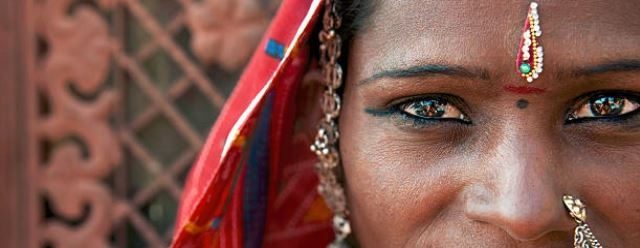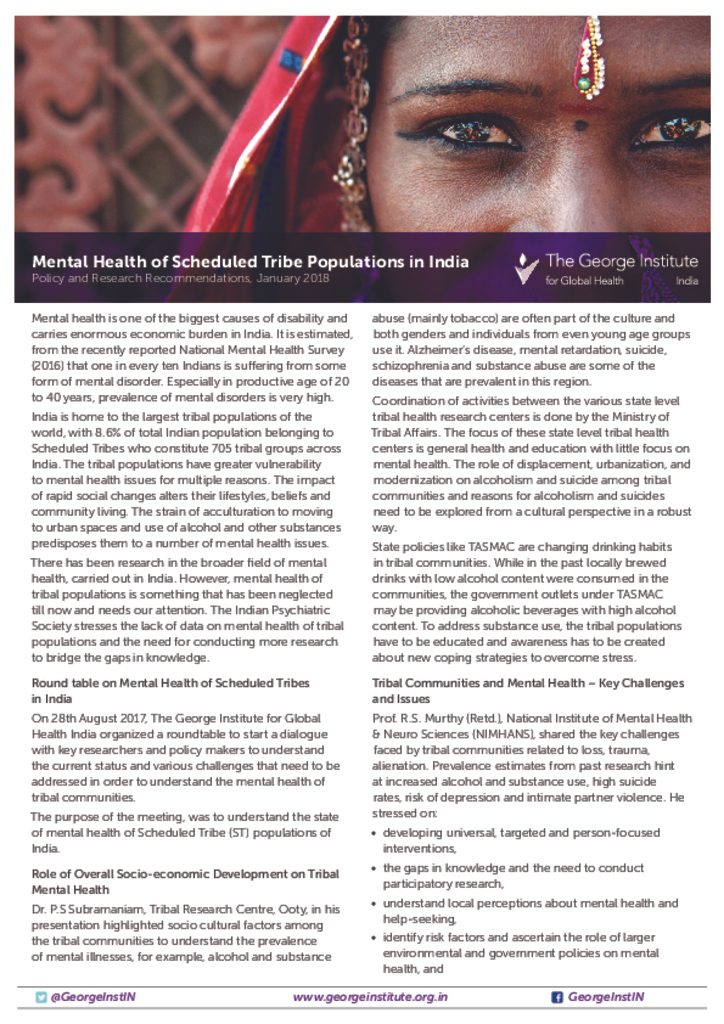
Mental health of Scheduled Tribe populations in India
On 28th August 2017, The George Institute for Global Health India organized a roundtable to start a dialogue with key researchers and policy makers to understand the current status and various challenges that need to be addressed in order to understand the mental health of tribal communities.
Mental health is one of the biggest causes of disability and carries enormous economic burden in India. It is estimated, from the recently reported National Mental Health Survey (2016) that one in every ten Indians is suffering from some form of mental disorder. Especially in productive age of 20 to 40 years, prevalence of mental disorders is very high.
India is home to the largest tribal populations of the world, with 8.6% of total Indian population belonging to Scheduled Tribes who constitute 705 tribal groups across India. The tribal populations have greater vulnerability to mental health issues for multiple reasons. The impact of rapid social changes alters their lifestyles, beliefs and community living. The strain of acculturation to moving to urban spaces and use of alcohol and other substances predisposes them to a number of mental health issues. There has been research in the broader field of mental health, carried out in India. However, mental health of tribal populations is something that has been neglected till now and needs our attention.
There is an urgent need to consider the mental health of the tribal communities and develop interventions both to mitigate their occurrence and provide services is an acceptable, accessible, affordable way.
The purpose of the round table meeting was to understand the state of mental health of Scheduled Tribe (ST) populations of India and the report summarises key topics presented and the lists the policy and research recommendations that emanated from the round table.
Download Research & Policy Recommendtions Report on Mental Health for Scheduled Tribe Populations in India (PDF 2.4MB)





